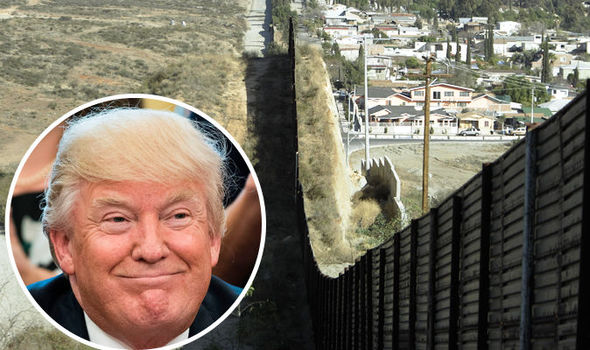President Trump on today unveiled his 2020 budget proposal, calling for domestic spending cuts of 5 percent across the federal government.
The White House, in Trump’s latest budget, would turbo-charge defense spending while providing $8.6 billion to fund his proposed southern border wall.
The proposal would raise overall defense spending to $750 billion, up from $716 billion in 2019, while slashing non-defense programs to $567 billion, down from the $597 billion allocated in 2019.
Democrats argue that the non-defense cut amounts to 9 percent, given that the legal cap will drop to $543 billion, with most of the difference accounted for by emergency disaster relief and wildfire suppression efforts that do not count toward budgetary ceilings approved under the Budget Control Act.
Trump’s budget is especially unlikely to go anywhere with the House in Democrats’ hands, but it lays out Trump’s priorities and could set the stage for shutdown fights this fall, when Congress and Trump will have to agree upon spending to keep the government open.
The request for increased border wall funds — enough to build 722 miles of a wall — follows a brutal fight with Congress that resulted in the longest government shutdown in U.S. history.
In his last budget request, Trump only asked for $1.6 billion for wall funding, but upped the figure to $5 billion and later $5.7 billion during the battle just months ago.
In the end, Congress allocated just under $1.4 billion for barriers, and Trump called a national emergency in an attempt to reprogram some $8 billion worth of funds from military and other programs.
The House voted to effectively overturn Trump’s declaration and the Senate is expected to follow suit this week, though the chambers do not have veto-proof majorities.
That fight will then likely turn to the courts.
In a joint statement, House Speaker Nancy Pelosi (D-Calif.) and Senate Minority Leader Charles Schumer (D-N.Y.) excoriated Trump’s budget request.
“President Trump hurt millions of Americans and caused widespread chaos when he recklessly shut down the government to try to get his expensive and ineffective wall, which he promised would be paid for by Mexico,” they said. “Congress refused to fund his wall and he was forced to admit defeat and reopen the government. The same thing will repeat itself if he tries this again. We hope he learned his lesson.”
The proposed cuts to non-defense spending would hit the departments of State, Agriculture, Education, Health and Human Services, Labor and Transportation, as well as the Environmental Protection Agency (EPA).
Even congressional Republicans have been skeptical of Trump’s budget requests, and have largely set them aside in the last two appropriations battles.
Senate Budget Committee Chairman Mike Enzi (R-Wyo.) referred today to the plans as a “first step” in the budget process.
Acting White House budget chief Russ Vought said the cuts amounted to $2.7 trillion over a decade, which he called the largest proposed budget cut in the nation’s history.
The 5 percent cuts proposed by the administration would not be evenly distributed, with some agencies targeted for deeper cuts.
The EPA would be cut by 31 percent, the State Department by 23 percent, Transportation by 22 percent, the Department of Housing and Urban Development by 16.4 percent, Agriculture by 14.8 percent and Education by 12 percent. The National Science Foundation would receive a 9 percent cut.
It would redirect some of those cuts to the Department of Homeland Security, which would get a 7 percent spending boost, and the Department of Veterans Affairs, which would increase by 8 percent.
The White House said those deeper cuts would allow the administration to invest in other priorities, such as $200 billion for infrastructure.
At the same time, the administration proposed raising defense spending spectacularly — by $75 billion to $750 billion.
Most of the increase would come from the Overseas Contingency Operations account, which is not subject to budgetary ceilings put in place by an Obama-era budget deal.
Budget watchers frequently slam the use of the account as a “slush fund” for avoiding caps on spending.
The Trump administration had previously signaled that it wanted to reduce the use of OCO.
Despite the cuts to non-defense discretionary spending, the budget does not balance over a ten-year window, a common priority that pays lip service to fiscal responsibility.
